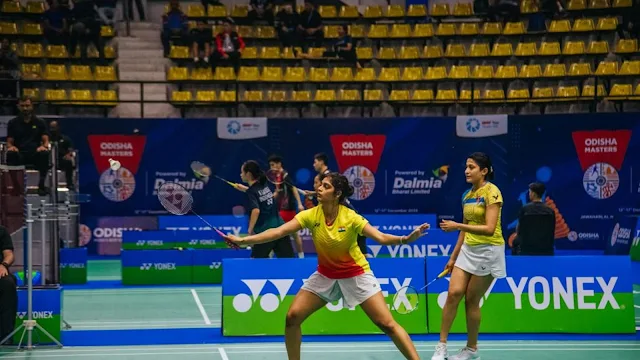Former Chief Minister, Naveen Pattanaik’s dream project “Dalmia Bharat Pullela Gopichand Badminton Academy" at the Kalinga Stadium complex, Bhubaneswar, was inaugurated on 12th December 2024 by Odisha Chief Minister, Mohan Charan Majhi and Himanta Biswa Sarma, President, Badminton Association of India. "This centre will take badminton in India to a new high," said CM Majhi. The High Performance Centre, resembling a badminton shuttle, covers 77000 square feet with eight badminton courts and seating arrangement for 400 spectators. Rated as one of the most advanced badminton infrastructures in the world, the Academy is expected to enthuse the young badminton players of Odisha.
"This revolutionary facility, with its unique design and state-of-the-art amenities, will play a crucial role in shaping Indian badminton's future," said Puneet Dalmia, managing director of Dalmia Bharat. Along with advanced badminton stadiums, the young badminton players need many other facilities to take the game to the next level.
Badminton is a very expensive game. The cost of a barrel of feather shuttle is Rs 2200.00; a good quality shoe costs Rs 10000.00; the racket cost varies from Rs 5000 to Rs 12000 and the gutting cost is around Rs 700. The cost of diets, coach fee, boarding and lodging expenses etc is around Rs 20000.00 per month. The average monthly expenditure on a badminton player is around Rs 40000.00. The cost of staying and playing in the High Performance Center is not known; which may not be affordable for players from the poor and the middle class families. Talented children do not choose family status before their birth. They can belong to the poor and middle class families; who may face deprivation due to lack of resources. The state government should give scholarships to young badminton talents after they perform well at the national level. Similarly the Corporate who take various concessions from the state should necessarily sponsor young players when they are in their early teens; without which it is impossible to shape the future of the young talents. The new badminton Academy will help the young badminton players of Odisha if they get an opportunity to practice in the Academy at an affordable cost. The Academy will be a success if it appoints foreign coaches from Indonesia, Malaysia and China along with good Indian coaches.
Over the years badminton has become a popular sport in India and many Indian players have won medals in the international competitions. Odisha has also emerged as a badminton power; Swetaparna Panda, Rutuparna Panda, Unnati Hooda and Pramod Bhagat have excelled in the International competitions. Pramod Bhagat is ranked world number 2 in para-badminton men's singles SL3, and he won a gold medal at the 2020 Summer Paralympics in Men's singles. There are many young players in the state who perform well in the national and international tournaments. Lack of funds is the biggest hurdle before the majority of the players.
In order to reduce the badminton expenditure, the government can think of giving concessions in rail and bus fare to young players. Besides the hotels, restaurants, sports shops and hospitals should cut their price for badminton players; without which it is impossible for the young players to continue in this game. In order to develop sports at grass root level, former Odisha CM, Naveen Patnaik approved the construction of 89 multipurpose indoor stadiums with badminton courts across the state. Some of the badminton courts constructed are underutilized and are facing maintenance problems. Both public and private sectors should come forward to sponsor young badminton talents and maintain the Indoor stadiums. The present government should create employment opportunities in multiple economic sectors of the state like tourism, agriculture, fishery, handicraft and services etc instead of focusing on industry, mining and real estate only. People need regular income to run their families and their surplus to spend on sports.


Comments